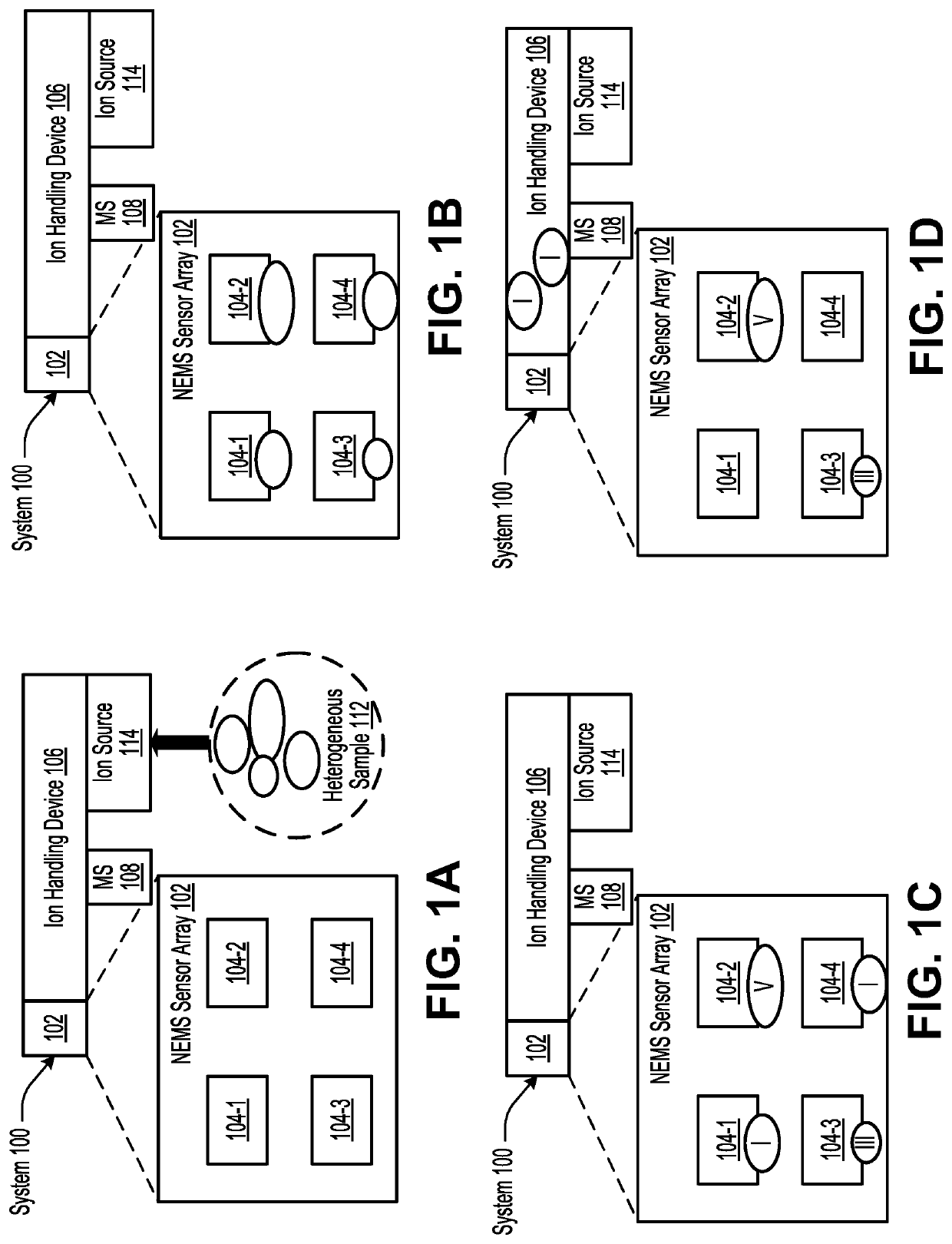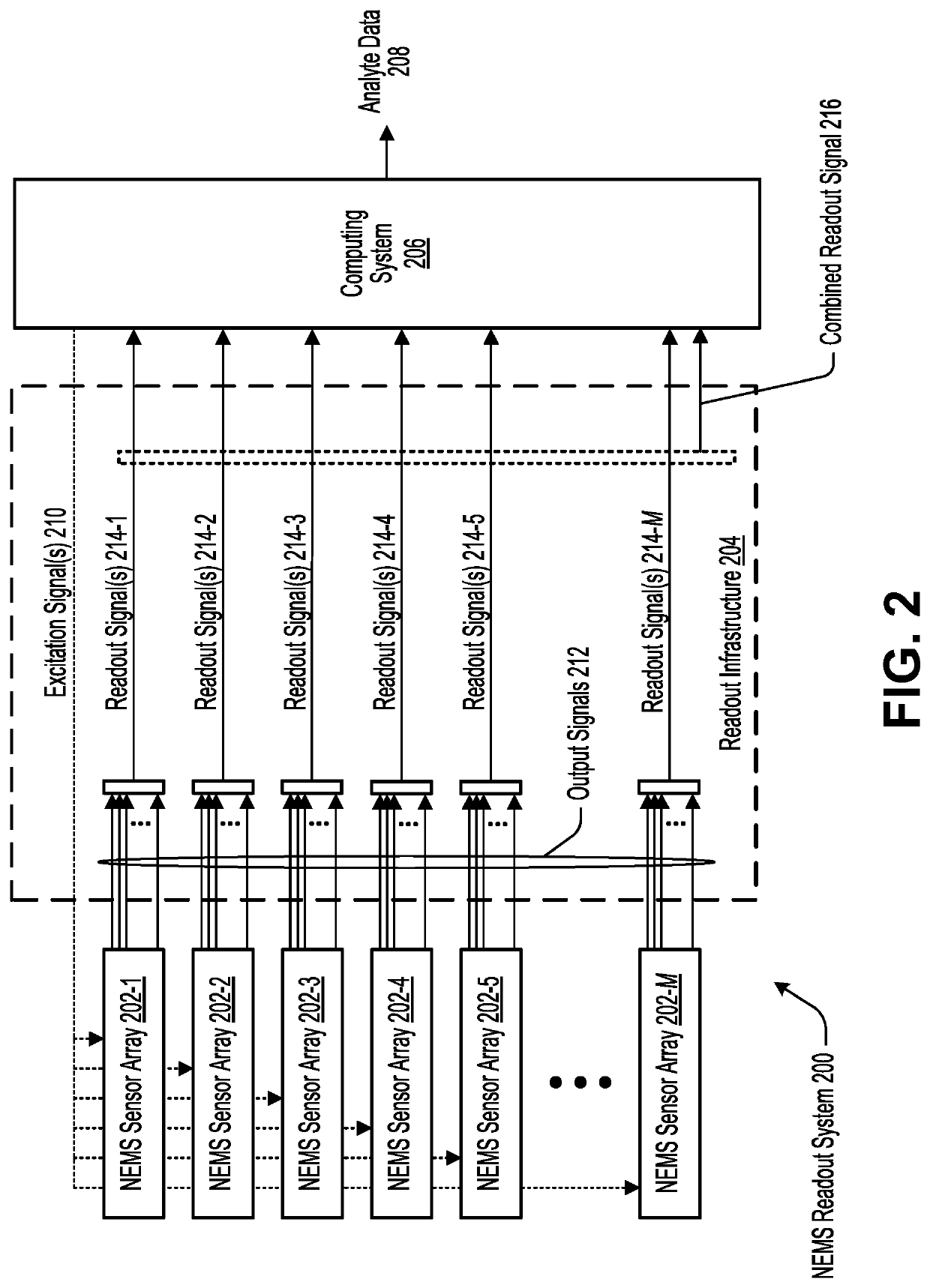Highly-multiplexed NEMS-array readout system based on superconducting cavity optomechanics
a superconducting cavity and readout system technology, applied in the field of high-multiplexed nemsarray readout system based on superconducting cavity optomechanics, can solve the problems of inability to directly confirm, laborious and often problematic preparatory protocols, and current top-down proteomics methods are severely challenged by the vast complexity of mpc heterogeneity, etc., to achieve efficient readout of sensor arrays, efficient adsorption of biomolecular
- Summary
- Abstract
- Description
- Claims
- Application Information
AI Technical Summary
Benefits of technology
Problems solved by technology
Method used
Image
Examples
Embodiment Construction
[0053]The instrumentation described herein provides a powerful tool for biochemical and medical research. An important example involves the profound cellular diversity in cancer. This disease remains the second most common cause of death in this country. During the past three decades, the pharmaceutical industry has made significant strides in developing targeted molecular therapies. These are enabled by the extensive, recently-achieved deciphering of details in the molecular pathology of cancer. Monoclonal antibodies and small-molecule inhibitors have been perfected to target principal molecular pathways underlying these pathologies, but oncological resistance to these therapies continues to routinely emerge in patients. Tumor heterogeneity can explain this ubiquitous emergence of resistant cellular clones; their diversity arises from Darwinian selection and evolution of cellular resistance to therapies. Accordingly, biopsies which generally reflect only part of the tumor provide o...
PUM
| Property | Measurement | Unit |
|---|---|---|
| superconducting transition temperature | aaaaa | aaaaa |
| mass resolution | aaaaa | aaaaa |
| mass resolution | aaaaa | aaaaa |
Abstract
Description
Claims
Application Information
 Login to View More
Login to View More - R&D
- Intellectual Property
- Life Sciences
- Materials
- Tech Scout
- Unparalleled Data Quality
- Higher Quality Content
- 60% Fewer Hallucinations
Browse by: Latest US Patents, China's latest patents, Technical Efficacy Thesaurus, Application Domain, Technology Topic, Popular Technical Reports.
© 2025 PatSnap. All rights reserved.Legal|Privacy policy|Modern Slavery Act Transparency Statement|Sitemap|About US| Contact US: help@patsnap.com



